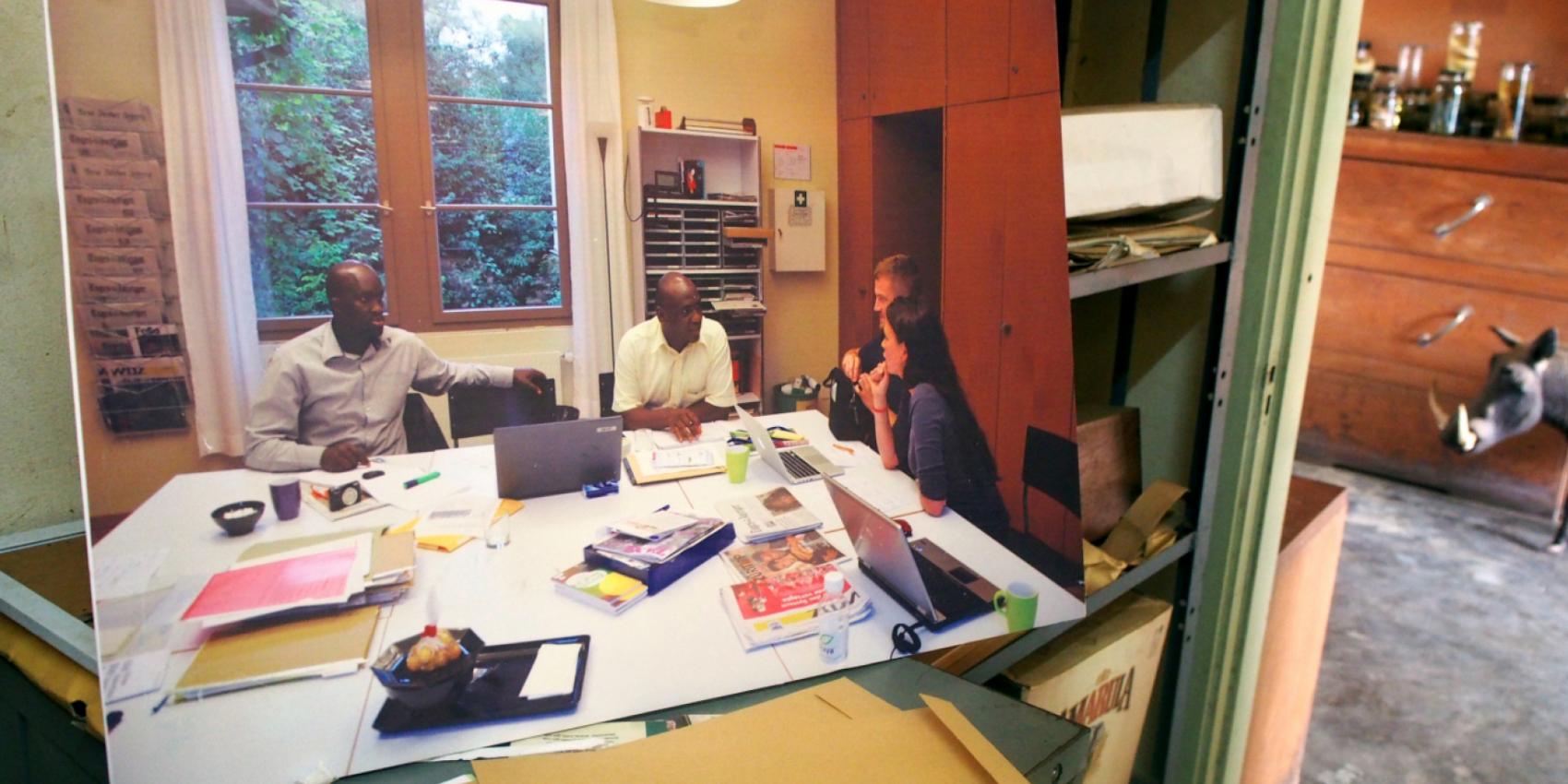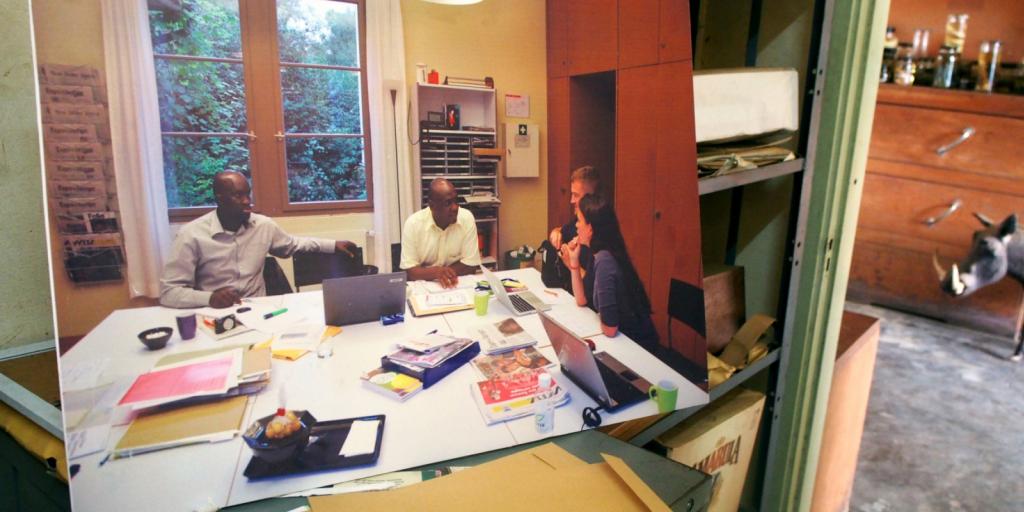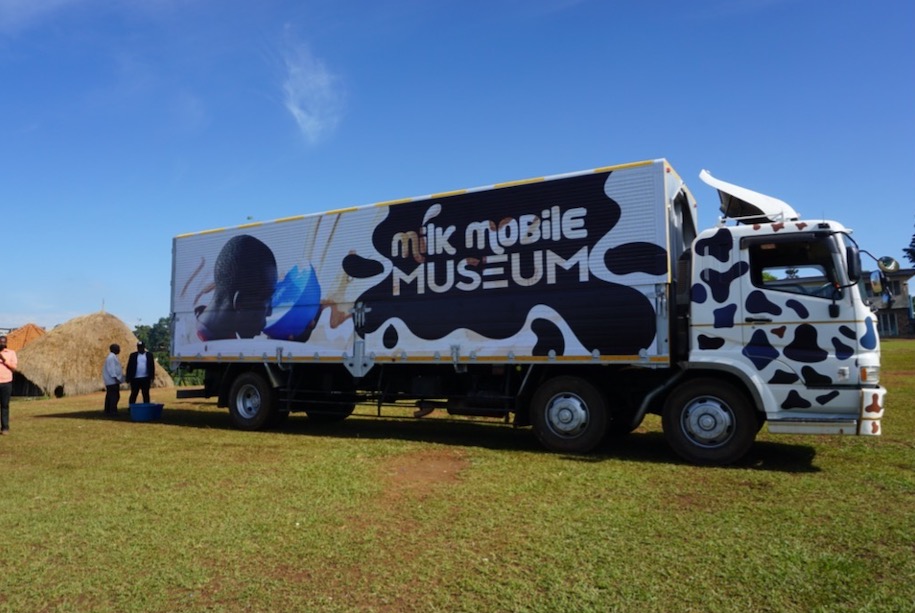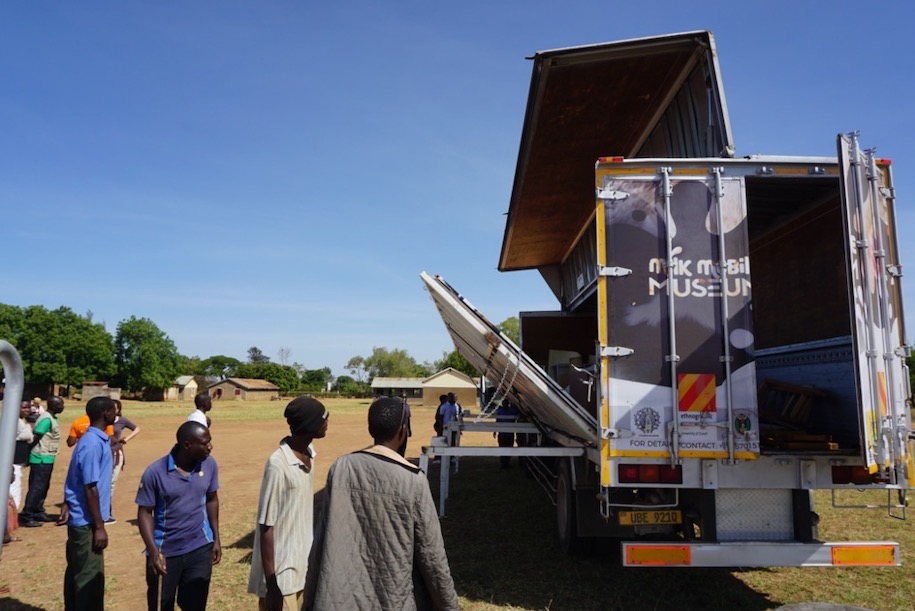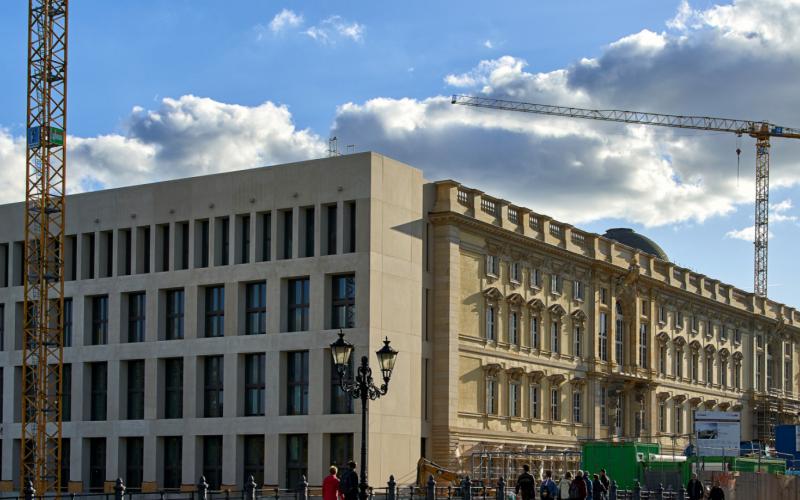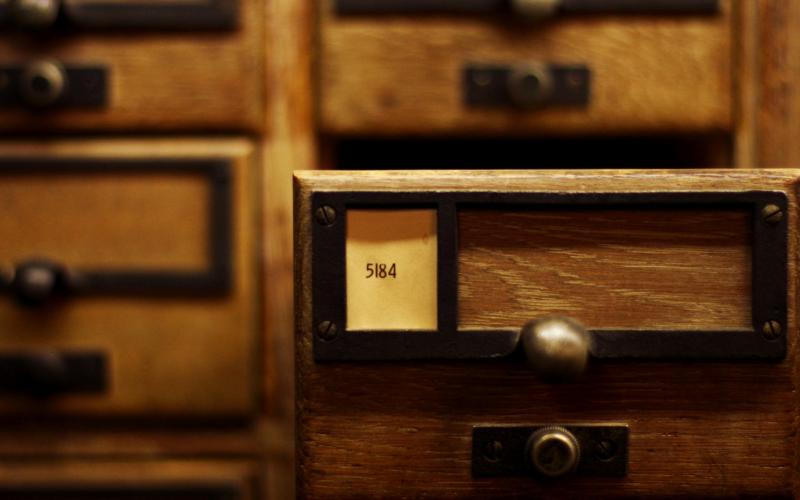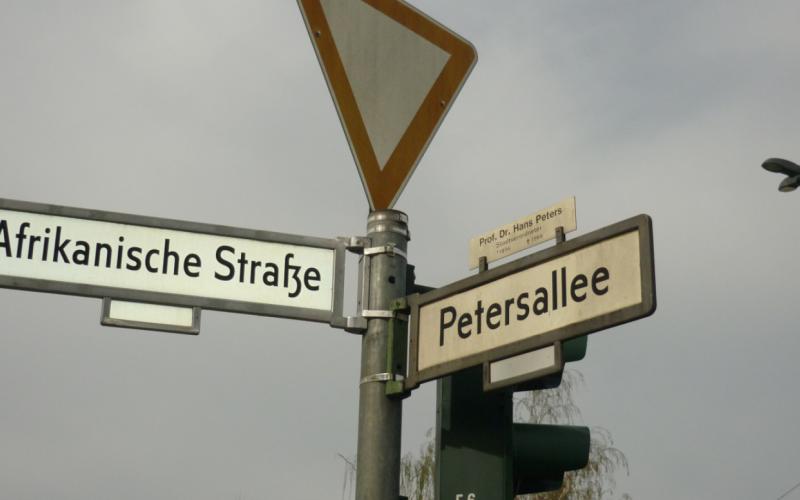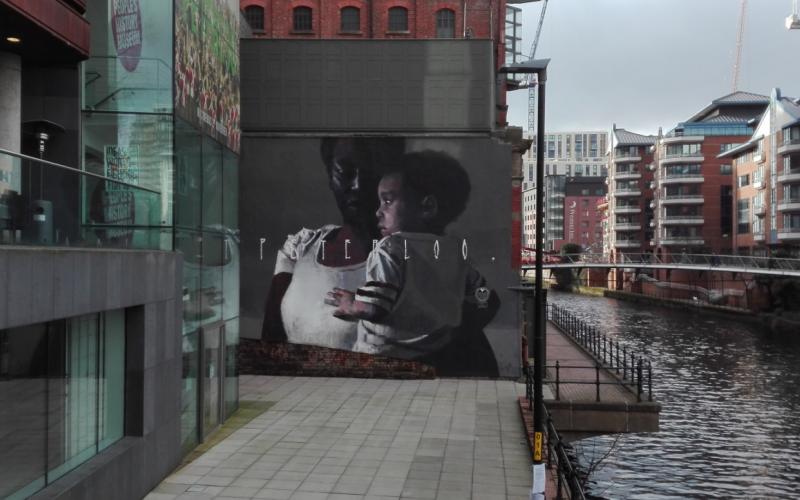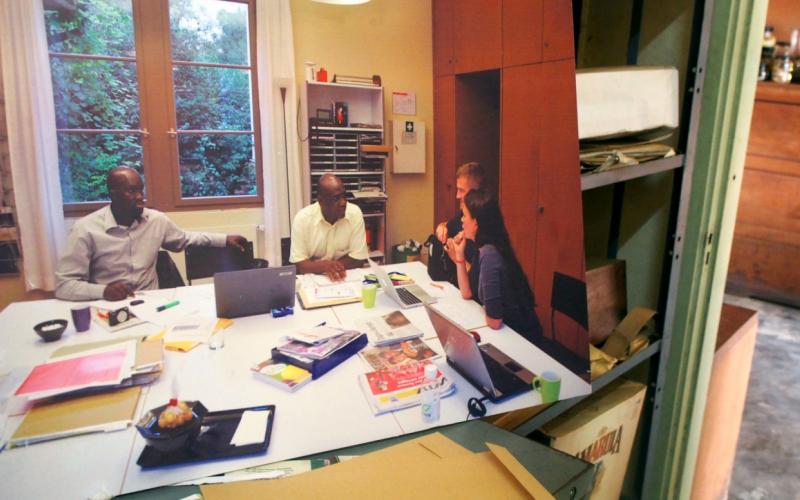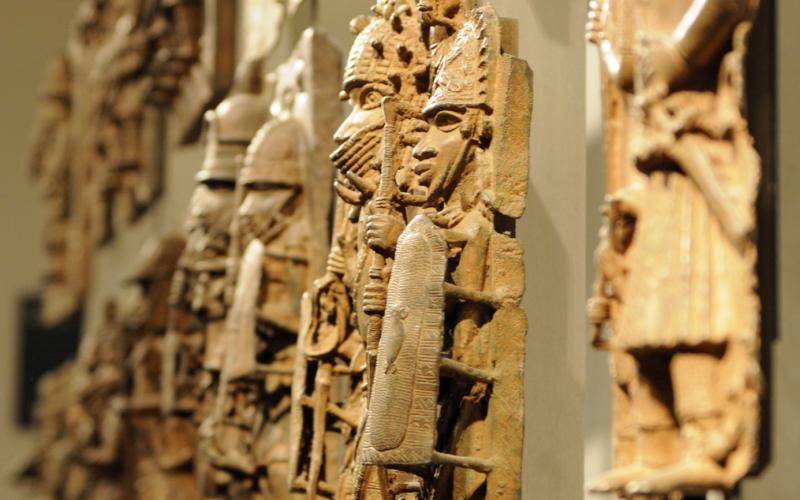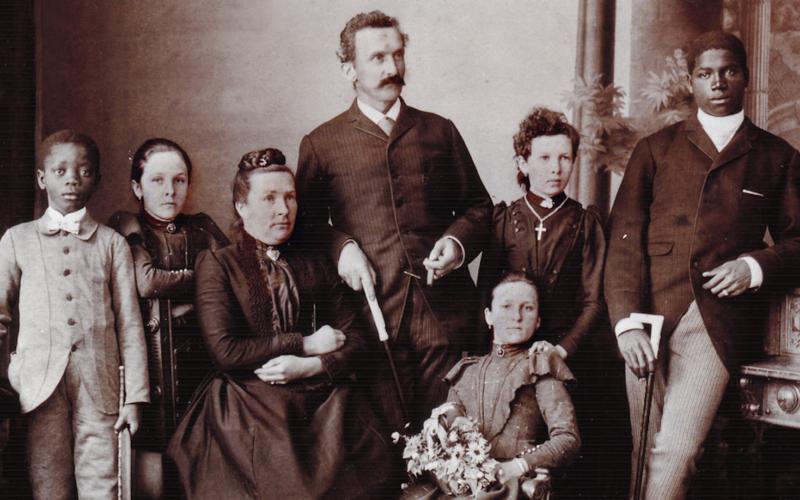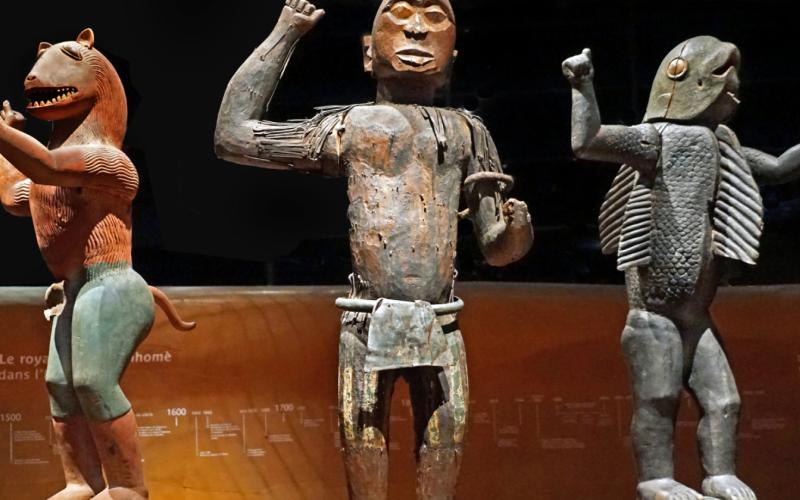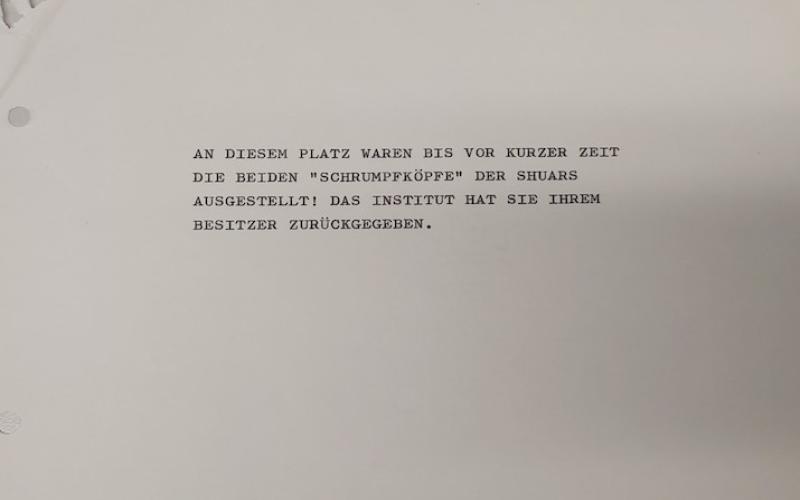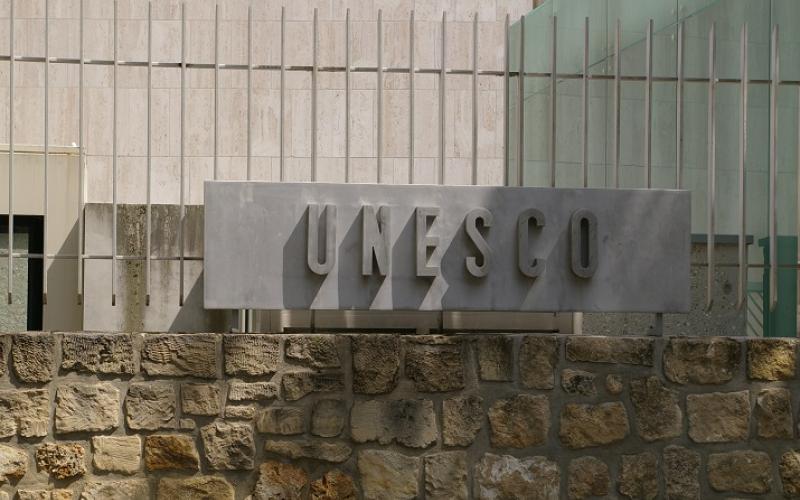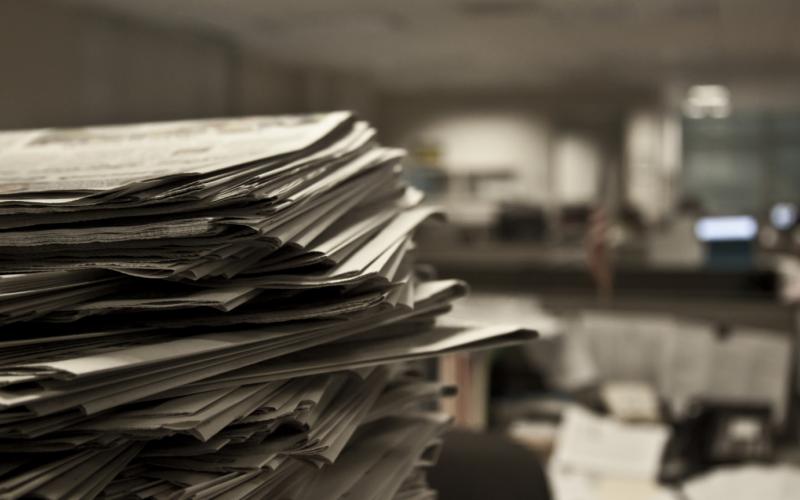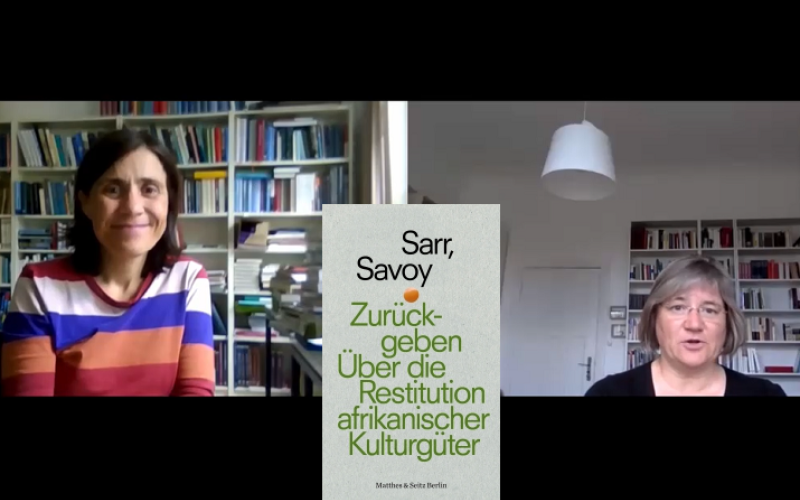The debates about what to do with collections from colonial contexts, and how to deal with them, have developed pace and unexpected momentum in the last three years. This is especially true for artifacts from the African continent, whether they are in museums or collections in Europe, North America, or elsewhere outside the continent. But the same is true under different circumstances, and we do not want to pass over this, for colonial collections and museums in Africa. Let's take a closer look at both in light of recent debates.
The discussions about whether, to whom and when under which circumstances a return, or rather indeed: an unequivocal restitution is appropriate or not, have recently experienced differentiations. This applies already to the preconditions of most restitutions, namely the opening and making accessible of the inventories. While some think that in principle everything should be put online, another opinion maintains that whenever possible, the creators or original holders should have their say beforehand, especially in the case of 'sensitive' objects such as those containing human remains, of a sacred nature, or photographs of contexts of violence. This has also brought other issues into focus – questions about the various forms of rights of disposal, about the forms and functions of museums in Africa, and in Europe and elsewhere.
With this contribution, we want to highlight that there is not just one option in dealing with collections, but that there are several different ones. Just as there are different forms of museums and functions they hold. Especially for the discussion about the handling of (colonial) collections, we considered it significant to broaden the horizon and to draw the attention to forms of museums for which collections and collecting practices had no or only a minor role. And to focus on and pay heed to cultures that know ways of storing and preserving as well as presenting their cultural heritage, their past and present, without the formation of collections.
In connection therewith, the concept of ‘decolonization’ requires a closer look. What does this term encompass, and what does it entail? The term is understood and interpreted in different ways. On the one hand, it is understood as the process which museums, archives, and other institutions initiate in order to broaden the perspectives they adopt beyond their own, usually those of the culturally dominant group. Second, and closely related, it refers to the goal of sharing authority over documentation and interpretation with others. This reveals that the process of decolonization goes far beyond practical questions of representation, power of disposal, and restitution.
It affects the language and choice of words used, what was or was not collected and archived and how, the categorizations used in the process, as well as the topics (not) addressed, what is deemed knowledge and what kind of knowledge, and how this is dealt with and presented and shared. If we look at the narrower field of "ethnographic" or in recent years often called "World (Cultural) Museums" and cultural history museums in general, then this must also include the consideration and a reflection on "Western (European/White) cultures and peoples and the question of why these have been ignored in many cases – or in what their inclusion would result and thus the epistemological rejection of not covering "the West/Whiteness" as a category. This gives an indication of how broadly "decolonization" is to be grasped.
What is clear: museum collections must be brought into play and into motion anew - and thus also: it is worthwhile to break open the narrow boundaries in which the museum has been conceived up to now, or, as others say: to disrupt the previous concept of the museum and the procedures associated with it.
We are convinced that in all these regards the lately frequent calls and attempts for ‘decolonisation’ have as their corollary an opening ?of museums, archives, and collections. Decolonisation is necessarily linked to cooperation with external interest groups. Now, are options of the often-invoked circulation of objects, long-term loans, and just different forms of cooperation anything more than excuses and subterfuges to avoid restitution? The question remains open and has to be examined on a case-by-case basis. We believe that all these options must complement each other. What is becoming obvious: museum collections must be brought into play and into motion anew - and thus also: it is worthwhile to break open the narrow boundaries in which the museum has been conceived up to now, or, as others say: to disrupt the concept of the museum, and to disrupt the procedures associated with it.
Decolonisation cannot be reduced to a simple return of artefacts or whole collections. It inevitably has to be accompanied by reconsidering and questioning the procedures and the very fact of collecting: what are the reasons for and the origins of the respective museum’s collections? Why and how were these objects assembled? What kind of information and knowledge have been recorded and circulated? This again implies rethinking the structures and the ways of functioning of ethnological collections and museums in general. It means scrutinising the very concept of the ethnographic / ethnological as a cultural history museum.
In recent years, there has been increasing talk of cooperating with and involving originating communities in the work of museums in the Global North. We are firstly confronted with the difficulty that there are not necessarily such ‘communities of provenance’ we could work with and that would qualify as communities. For this reason, we favour to employ the term ‘societies’ or even ‘regions of provenance’. And we prefer to get in touch – and, in the best case, partner – with local institutions or bodies that have an interest in our collections and museum activities. For museums, the most obvious counterparts are not always, but in many cases, museums rather than the often-invoked alleged (local) communities of origin. Here we would like to present and discuss an example of such a partnership. We explore from a Swiss and a Ugandan point of view the case of a tripartite long-term collaboration between museums in Uganda and Switzerland, a partnership started in 2015 that centres on reciprocal ethnographic research undertaken in both countries. It involves an exchange of knowledge about museum practice and has so far resulted in diverse exhibitions, seminars and publications, among other things.[1] It is an experiment in and an effort for a partnership on equal footing, despite being framed by structural inequalities.
A new dynamic rather than a crisis
Briefly, we would like to outline the current situation of ethnographic museums in Europe and in Africa and then discuss alternative options in dealing with objects as parts of museum collections. To start with, it would be simplistic to say that ethnological museums are in crisis today. However, if we want to understand ‘crisis‘ in the original literal sense as a ‘decisive turn‘, then there definitely are aspects of such a change. In any case, ethnological museums today are in a period of upheaval and find themselves suddenly in the centre of new, previously unknown attention. However, their situation is not simply a critical one, but one characterized by new energy and dynamism that have not been seen for a long time. And this applies to museums in Europe as well as in Africa. Something has started to move, and this movement can no longer be stopped. The new dynamic will also have consequences for the handling of the collections.
In discussing issues of property and restitution and related strategies, we can easily get the impression that the concerned museum practitioners and politicians are preoccupied almost exclusively with Europe and the Global North. The other side, in our case Africa, is hardly ever discussed. Furthermore, we rarely hear the voices and opinions from the African side. Actually, when addressing issues of possible returns and property, we would expect more attention to and engagement with the receiving, that is the new hosting side, as the original starting point of the collections, and not only with the now outgoing, returning body. With such a shift of focus, turning our attention not only to the outbound, but also to the inbound side, the debates receive a new weighting and orientation. We are convinced that they can bring about and materialise in new possible solutions.
In addition to ‘local communities‘, cultural and museum institutions that may have been involved in the process of collecting and assembling the collections in Africa would thus need to be considered. Museums in Africa have found new attention and dynamism in the last few years, certainly also stimulated by the international debates on cultural heritage and restitution. The recent relaunch of AFRICOM, the International Council of African Museums, is an expression of the new drive and debate in the cultural and museum landscape on the African continent. The relaunch was announced on the eve of the “International Museum Day” 2019 organized by the International Council of Museums (ICOM) under the motto “Museums as Cultural Hubs: The Future of Tradition”. This pan-African non-governmental organisation, founded in 1999 in Lusaka, Zambia, had fallen asleep after its first successful years of capacity building and networking among African museums and was no longer functional. However, what initially looked like a new departure, promising new impetus and a multilateral basis for stronger networking among African museums and beyond, quickly became a victim of heritage politics and disunity among the various African states. In spite of this setback, there is considerable buoyancy and movement among museums in Africa. There is a need for new multilateral initiatives and procedures. European museums and cultural institutions should look beyond a purely bilateral pattern of action and be ready to actively involve African bodies and umbrella organisations. This is a necessary condition for their success.
The new attention to African museums also revealed the widespread biased and skewed perception of museums in Africa. It surely is futile to make generalisations for the whole (sub-) continent, but we can identify some distinct common characteristics that make museums in Africa stand out from museums in the northern hemisphere. This is not surprising when we consider the noticeably different social and political position of most museums in today’s contemporary societies of sub-Saharan Africa.
Many cultural history museums in Africa are still faced with the underlying problem that they are creations of the colonial era. But, contrary to what is sometimes described cursorily, most of today’s museums in Africa are not just dusty places of colonial history and collections, mostly assembled by Europeans and appearing strange on site. This was recently pointed out by several scholars who know today’s African museums from their own experience (e.g. Schrenk 2019, Schwere 2019). The concept of the museum has undergone a fundamental change of meaning in Africa in recent years. A new generation of scholars and museum practitioners has begun to reappraise these places dedicated to cultural heritage and to provide and use them with new directions and functionalities. In their tasks of identity-strengthening (be it on a national, regional or local level) and of the formation of social and socio-political responsibility and interest, they contribute to the integration of and dialogue with local communities, as well as to the international production of knowledge. The associated strands of knowledge are decisive for the broad acceptance of all levels of the objects’ meaning and for their reconnection to the population groups involved, in whatever form.
Many museums in Africa are now characterised by a greater breadth of social tasks and functions. They are more places of encounter and confrontation than of contemplation and aesthetic enjoyment. They radiate and are oriented more outwardly than inwardly. In many cases, they have broad-based outreach programmes and regional outposts, sometimes specialised like archaeological sites. This gives them a stronger local aura and impact, in accordance with specific interests and local requirements.
All this applies despite an often inadequate infrastructure. An out-dated infrastructure does not fundamentally hinder the foremost externally oriented tasks. The use of the available funds expresses cultural-political priorities: buildings and their shells are less expected to be architecturally iconic and technically highly equipped than to engage in outreach and have broad impact. The point is an active exchange with a broad public in various forms and direct dialogue and debate, up to participation in processes of conflict resolution and reconciliation.
It is not surprising that the various museum models can also be associated with a different use of the museum’s collections and different application and handling of the objects. As we have seen from our Swiss-Ugandan partnership, and it is not the only one, such intercontinental relations and professional exchange through museum work can provide a new access to the collections and the broader material world of objects not necessarily stored in museums. In order to arrive at new approaches to museum work and dealing with collections, a certain ‘démusealisation’ may be necessary, as Germain Loumpet uses the term – to move away from and liberate ourselves from former conceptions of dealing with and displaying collections shaped primarily by European practice. “The difficulty lies in reconciling established museographic obligations with the requirement for participation. It is not enough to simply propose a display; the actors – who are, at the same time, the subjects and objects of their own history – must also be present” (Loumpet 2018: 46). Or as another colleague from an African museum association put it: “Today we are reviewing the role of museums [in Africa] – we need a shift from conservation to cooperation and communication.”[2]
We are also presented with further pressing questions for museums both in Europe and Africa at this point. How and on which terms do we choose the ‘communities’ and people with whom we want to work together more closely? Or how Francesca Conte put in in a webinar at the end of last year: “How can we deal with the allegation of ‘tokenism’ when the community is involved only for short-term project and not part of the curatorial team? When tokenism ends and agency finally starts in community engagement project?”.[3] Which roles and expertise do communities and external partners embody, how will they not only be ‘invited’ but truly involved and compensated? All of these questions are in need of answers which can be obtained through an exchange between African and European museums for one thing, but more importantly through the collaboration between external demand and interest groups.
Which options of working with objects from museum collections are there today?
- First, there is the continuation of the status quo – collections and objects remain largely in storage, only 2% - 5% can be seen and are accessible in exhibitions. Moreover, access to the storage facilities and archives is, as a rule, still severely restricted:Certainly physically, but very much online as well, since a large part of the collections has not (yet) been digitized. At this point, we have to be aware that the original owners or originators of the collections usually cannot trace where the objects are located. Indigenous people’s attempts to enquire are often bureaucratised through formal proceedings that are far beyond the level of possible engagement of the rural population.
- All possibly reclaimed objects are returned to their originators or original owners. Today it is generally understood that in most cases a return cannot mean just filling an empty space in a drawer or cupboard (that in most cases does not exist), closing and ‘healing’ a wound. As we have learned from many and also the latest examples of restitution, each is linked to numerous questions that still have to be answered. Furthermore, the public’s level of awareness and involvement in the politics of restituting ‘African Art’ is yet to be understood. What is the process of returning these objects, what forms of agency become involved in the specific restitution procedure? In the case of spiritual or (semi-)sacred objects, do we have to deal with communities or rather with museums or official statal bodies? In the vast majority of cases, the politics and ethics of returns are determined by the fact that they take place through official channels. In the coming years, they will continue to be a constituent part of the state’s cultural policy that shapes the discussion of returning African heritage. Restituted artefacts are usually received by official state museum institutions. It has to be seen here that it was precisely this type of colonially established museum that was responsible for some of the cruelty and atrocities done to the objects. This calls into question these museums’ suitability and their entitlement to receive objects returned by the successor states of the former colonial powers and to act as recipients of the restituted objects. This is only one of the complex considerations and questions linked to many returns.
- There are other options for dealing with objects from museum collections besides keeping them untouched and preserving them as long as possible in the state in which they entered the museum. “The museum is not a prison for the objects. They can come and leave again," explained Raymond Asombong, the director of Cameroon’s National Museum at a conference held in Yaounde in July 2019.[4] In some cases, important objects are only loans to the museum from the communities, and they are regularly taken out to be used in (political, spiritual, religious) functions and ceremonies, which sometimes also take place at the museum itself. This is an established practice at the Manhyia Palace Museum of the Asantehene in Kumasi, Ghana, or, albeit in different form, at the Uganda Museum in Kampala, the Palace Museum of the Sultan of Bamun in Foumban, Western Cameroon, to give a few examples. In this regard, one sometimes speaks of a “living museum”, “un musée vivant” where the boundaries between museum, environment and originators are more fluid than we are familiar with in the West (in other cases, for instance in southern Africa, the label ‘living museum’ is given rather to museum sites where local artisans and craftspeople perform for the audience); As a subcategory of such practices, we can see the cases of objects that are used and employed by the communities or by the museum in contact with the communities, for instance in procedures of conflict resolution and reconciliation as examples from Northern Uganda or others from Kenya illustrate (see for example Abiti 2018).
- Replicas are another option. Here we should first recall the questionable quality of ‘authenticity’ and that in African societies many major spiritual, quasi-sacred or dynastic objects were regularly replicated. This was also the solution found for the exhibition in Kumasi’s palace museum, where it was decided that further replicas should be made for displaying whereas the existing ones can still be used as ‘working objects’ to perform some function in the continuing operation of the social, religious and political system.[5] As the objects could be useful or used by more than one party, if reclaimed or not, museum practitioners should envisage working with replicas, which nowadays can be manufactured quite easily by digital tools. As a general rule, we postulate that it goes without saying that the ‘original’ – if such exists – goes to the originators and the replicas to the museums.
- In some cases, there is the option of using the collections, as small and fragmentary as they may be, to establish new relations between museums. As in the case of the Swiss-Ugandan partnership, or between museums and communities, integrating different forms of knowledge production. This opens up a vast, hitherto little explored field.
What we need today is a new way and form of relating to and dealing with objects and collections. As we have tried to point out, there are several options and new ways open to value and enhance the museum collections in and between Africa, Europe and beyond, when we dare to question the paths, values and ways of acting that have been followed predominantly up to now, and at times leave these paths for new routes. In the process, cooperation and networking are a central part of a newly conceived museum that is ready and able to accept and take up postcolonial challenges both in Europe and in Africa.
References
Abiti Adebo, Nelson. 2018. The Road to Reconciliation. Museum Practice, Community Memorials and Collaborations in Uganda. In: Laely, Thomas, Marc Meyer and Raphael Schwere (eds.). Museum Cooperation between Africa and Europe. A New Field for Museum Studies. Bielefeld & Kampala: transcript-Verlag & Fountain Publishers, pp. 83-95. DOI: 10.14361/9783839443811-008
Loumpet, Germain. 2018. Cooperation between European and African Museums: A Paradigm for Démuséalisation? In: Laely, Thomas, Marc Meyer and Raphael Schwere (eds.). Museum Cooperation between Africa and Europe. A New Field for Museum Studies. Bielefeld & Kampala: transcript-Verlag & Fountain Publishers, pp. 43-54. DOI: 10.14361/9783839443811-008
McLeod, Malcolm. 2013 [12004]. Museums without collections: museum philosophy in West Africa. In: Knell, Simon J. (ed.). Museums and the future of collecting, pp. 52-61. Farnham: Ashgate Publ.
Schrenk, Friedemann. 2019. Afrikas Erbe: Wir müssen verhandeln! In: Frankfurter Allgemeine Zeitung, 30.04.2019.
Schwere, Raphael. 2019. Afrikas Museen haben sich längst emanzipiert. In: Neue Zürcher Zeitung, 17.04.2019.
* Earlier versions of this contribution were presented at the International Conference “Museum Collections in Motion: Colonial and Postcolonial Encounters” in Cologne in July 2019 and have been published as part of the boasblog in January 2020 (boasblogs/How can we go on with Humboldt’s legacy? Rethinking ethnographic collections). We are grateful to the Ugandan-Swiss museum cooperation team for numerous fruitful discussions and feedbacks on earlier versions of the present paper.
[1] Two exhibitions on Ugandan and Swiss milk cultures were launched in September 2017 in Kampala (Drink Deeply!, until May 2018) and Mbarara (The Power of Milk, now part of the permanent exhibition); the exhibition Points of View: Visions of a Museum Partnership, also providing a virtual tour through two exhibitions in Uganda, was displayed at the Museum in Zurich from April 2018 until January 2019. The subsequent Mobile Milk Museum was touring Uganda’s regions on a large truck with an extendable exhibition space from February to July 2019.
[2] Jeremy Silvester, Museum Association of Namibia, at the workshop ‘Stolen from Africa?’, Basel, 8 May 2019.
[3] In the Webinar "Decolonisation as a Verb", jointly organized by the South African Museums Association (SAMA) and the International Council of Museums in South Africa (ICOM-SA) and the ICOM committee COMCOL on 25/26 Nov 2020.
[4] “Nouveaux Modes de Coopération muséale entre l’Afrique et l’Europe: le cas du Caméroun et de la Suisse”, Institut Français du Caméroun, Yaounde, 4 juillet 2019.
[5] Cf. McLeod 2013:58.
Zitation
Nelson Adebo Abiti, Thomas Laely, Towards a Renewed Concept of Museum in Africa – and in Europe*, in: Zeitgeschichte-online, , URL: https://zeitgeschichte-online.de/themen/towards-renewed-concept-museum-africa-and-europe

